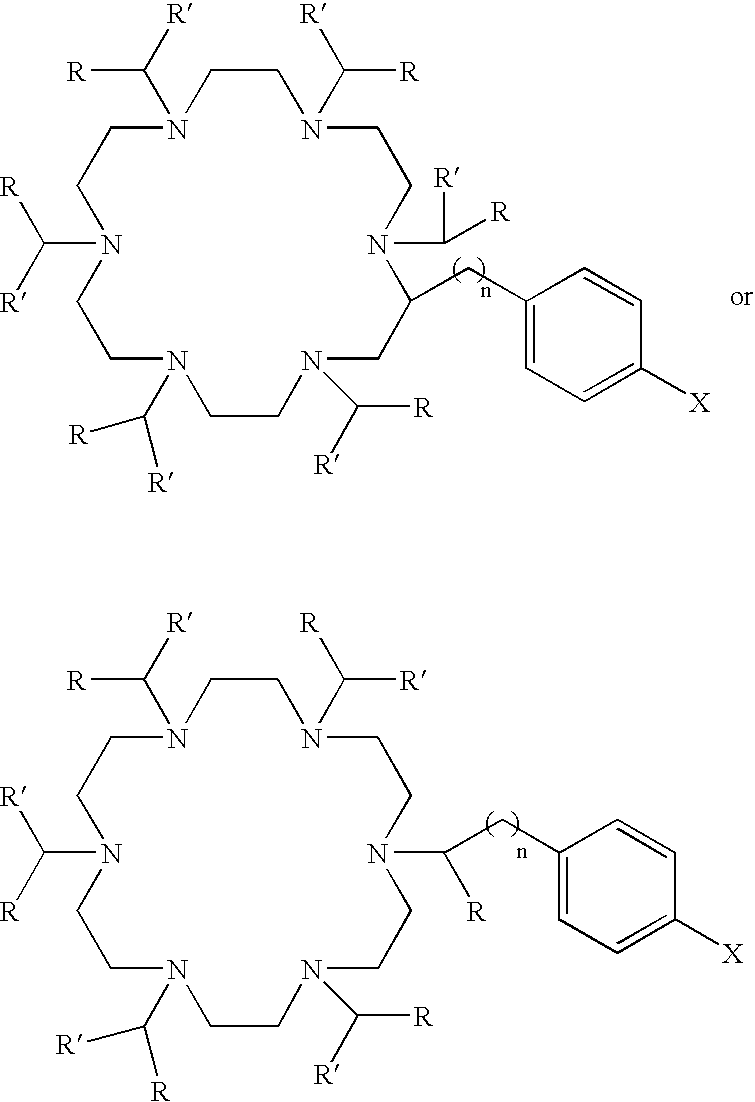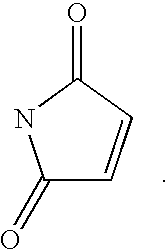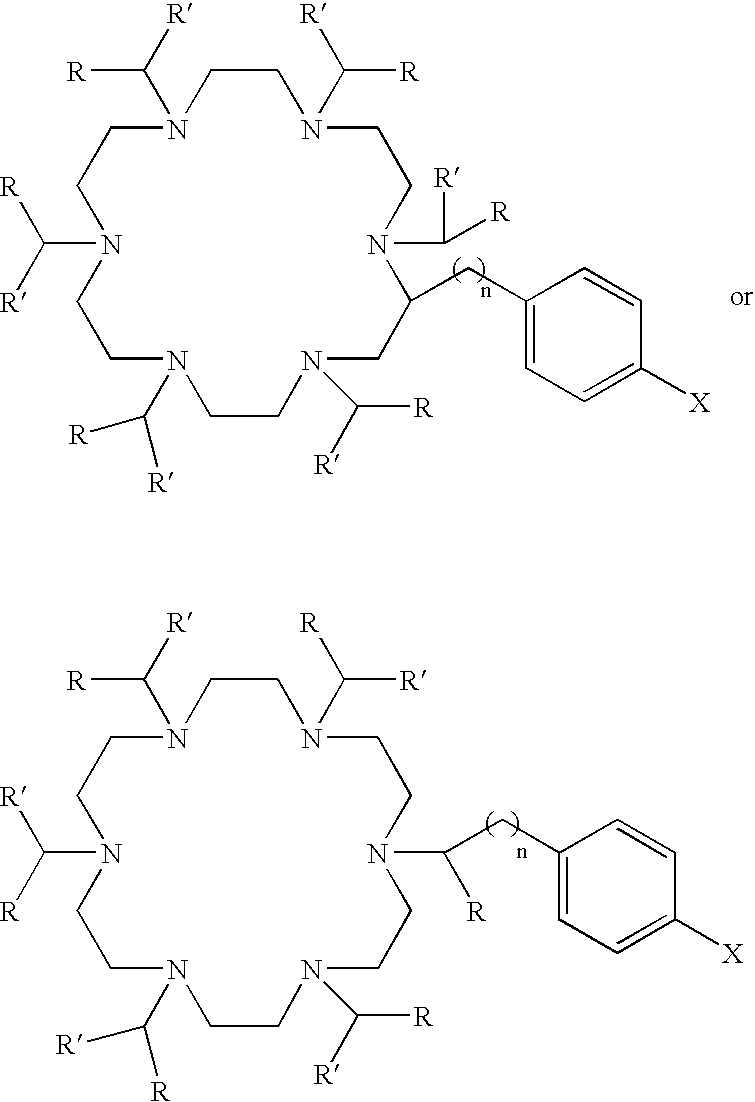Ac-HEHA and related compounds, methods of synthesis and methods of use
a technology of ac-heha and related compounds, applied in the field of chelation complexes, can solve the problems of small clusters of cells, limited utility, and inoptimal tissue range of several millimeters for single cell treatmen
- Summary
- Abstract
- Description
- Claims
- Application Information
AI Technical Summary
Benefits of technology
Problems solved by technology
Method used
Image
Examples
example 1
[0058]This example describes the synthesis of 1,4,7,10,13,16-hexaazacyclohexadecane-N,N′,N′,N′,N′N′-hexaacetic acid (HEHA).
[0059]1,4,7,10,13,16-hexaazacyclohexadecane trisulfate was converted to the free base ([18]aneN6) by neutralizing the trisulfate salt to pH>13 with sodium hydroxide, removing water in vacuo, adding benzene, refluxing the resultant slurry with a Dean-Stark trap (Kontes Glassware Co., Vineland, N.J.) for 4–6 hrs to remove residual water, filtering the benzene solution, and evaporating to dryness to yield the free base. The hexaester, 1,4,7,10,13,16-hexakis(tert-butoxycarbonylmethyl)-1,4,7,10,13,16-hexaazacyclooctadecane, was prepared by adding Na2CO3 (2 g, 19.4 mmol, 10 eq) and tert-butyl bromoacetate (2.3 ml, 15.5 mmol, 8 eq) to a solution of [18]aneN6 (500 mg, 1.95 mmol, 1 eq) in anhydrous CH3CN (25 ml). The reaction was stirred at room temperature under inert atmosphere and monitored by 1H NMR. The reaction was completed in seven days. The solvent was removed u...
example 2
[0061]This example describes the radiolabeling of HEHA with 225Ac.
[0062]225Ac was separated from 225Ra (t1 / 2=15 days) by ion exchange and extraction column chromatography as described previously (Boll et al. (1997), supra). Stock solutions of purified 225Ac in 0.1 M HNO3 were freshly prepared as needed. 225Ac was complexed with HEHA by mixing approximately 100 μl of 225Ac solution (approx. 10 MBq, 0.1 M HNO3) with 20 μl of ligand (approx. 1.0×10−2 M in H2O) and adjusting the pH to near 5.0 by the addition of 5–10 μl of 1.0 M NH4OAc. The mixture was kept at 40° C. for 30 min and then purified on a Chelex column (Bio-Rad Laboratories, Richmond, Calif.); approx. 300 μl bed volume, pre-equilibrated with 0.1 M NH4OAc, pH=5.0), using 2 ml of NH4OAc solution as eluant.
example 3
[0063]This example describes the synthesis of bifunctional HEHA.
[0064]Boc-IDA-diglycine ethyl ester
[0065]N-tert-butyloxycarbonyl-iminodiacetate (Boc-IDA)(20 g, 85.8 mmol, 1 eq), glycine ethyl ester hydrochloride (24 g, 171.9 mmol, 2 eq) and triethylamine (24 ml, 172 mmol) were dissolved in anhydrous N,N-dimethylformamide (DMF) (700 ml). 1-ethyl-3-(3-dimethyl-aminopropyl)carbodiimide (EDC) (34 g, 88.7 mmol, 2.1 eq) was added and the solution stirred for 18 hrs at room temperature. The DMF was removed under vacuum and the residue was dissolved in ethyl acetate (600 ml). The ethyl acetate was extracted with water (200 ml×1); 5% NaHCO3 (200 ml×3); brine (200 ml×1); 1 M HCl (200 ml×1) and brine (200 ml×2). The organic layer was dried over Na2SO4, filtered and concentrated to yield an oil (23 g, 66%). 1H NMR (DMSO (dimethyl sulfoxide)-d6) δ: 1.19 (t, 6H, CH3); 1,35 (s, 9H, C(CH3)3); 3.30 (s, 2H, CH2); 3.32 (s, 2H, CH2); 3.88 (s, 2H, CH2); 3.91 (s, 2H, CH2); 4.08 (q, 4H, CH2CH3); 8.80 (t, ...
PUM
| Property | Measurement | Unit |
|---|---|---|
| Radioactivity | aaaaa | aaaaa |
Abstract
Description
Claims
Application Information
 Login to view more
Login to view more - R&D Engineer
- R&D Manager
- IP Professional
- Industry Leading Data Capabilities
- Powerful AI technology
- Patent DNA Extraction
Browse by: Latest US Patents, China's latest patents, Technical Efficacy Thesaurus, Application Domain, Technology Topic.
© 2024 PatSnap. All rights reserved.Legal|Privacy policy|Modern Slavery Act Transparency Statement|Sitemap



